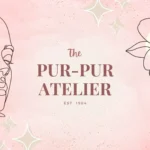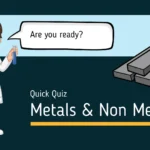Introduction
Let’s enter into how Pheromone Trap Diagrams work and why diagrams help us understand them better. Pheromone traps are really useful, and they don’t disaster up the planet; these traps catch pests by tricking them with fake signals that mimic their mating calls, cutting down the number of pests without using dangerous chemicals; the hermetic result of this?
A very intelligent and informed way to successfully deal with pests that’s good for the Earth. Having pests all over can disaster up farming places, Pheromone Trap Diagrams natural spaces, and where we live, making everything unhealthy and; this is of significant consequence because if pests run wild, they can destroy crops, hurt the environment, and turn our homes into places we don’t want to be.
Usually, dealing with pests meant using harsh chemicals that could hurt more than just the pests. One can see — unquestionably so — Pheromone Trap Diagrams we need to find ways to deal with pests that won’t backfire on us or the planet.
This is why keeping pests in check is a large challenge but extremely important for making sure farms and our homes stay in excellent shape: among the group of ways to control pests, harbor silicone traps hit the mark by being eco-friendly and first rate at what they do. Pheromone Trap Diagrams beam into the limelight as this clever pick in our battle against pests, spotlighting how harnessing easy-to-use, green technology can make an enormous difference.

You might think that knowing about Pheromone Trap Diagrams and how to set them up is complicated–but once you see some diagrams, it clears things up. Those pictures really show all the components of the trap and how they fit together, which makes it significantly simpler to figure out and put them to use wherever you need to. In this article, we’re going to get into not only how excellent these traps are for controlling pests–but also how looking at their diagrams can hone your approach.
It is moreover apparent to you and I that getting a grasp on the whole Pheromone Trap Diagrams situation, such as what they actually are and their role in kicking pests out, involves a bit of science talk. We’ll break down the different kinds of pheromone traps in the area, what makes them good at what they do, and lay out how to digest and put together diagrams that lay out how to use them.
In addition we’re going to discuss about examples from real life where these traps did the magic, some fresh innovations keeping them at the top of their industry, and some tips for anyone wanting to make their own Pheromone Trap Diagrams.
By the wrap-up of this piece, you may be a tad disbelieving that–but you’ll understand Pheromone Trap Diagrams and why understanding the diagrams can enhance your approach to managing pests.
Whether you’re farming and trying to shield your crops, at home battling it out with bugs, or you’re solely focused on finding eco-friendly fixes, this guide is packed with insights that’ll shine a light on the Pheromone Trap Diagrams scene.
Understanding Pheromone Trap Diagrams
The upshot of this entire piece is, clearly, that pheromones are extremely interesting chemical signals that critters use to discuss with their species for several reasons. Let’s unpack what pheromones are, because they’re more than just nature’s way of making sure bugs aren’t lonely;
they’re like nature’s notes, telling other animals where to find food, who’s ready to mate, when danger’s around, or even when and where to gather. Now, about the kinds of these chemicals: first, you have sex pheromones, Pheromone Trap Diagrams and yes, their job is exactly what you think: helping animals find partners to mate.
They’re also used by intelligent and informed scientists to trick pests into falling for a deadly date instead. Then there are aggregation pheromones which are saying, “let’s get together!” But for bugs, making them all convene together. Next, trail Pheromone Trap Diagrams are the signals that guide others to food.

And if something bad’s about to occur, alarm Pheromone Trap Diagrams are the ones screaming, “Get away!” It is moreover apparent to you and I that people have figured out how to borrow this trick from mother nature. In tackling pest woes, scientists have crafted fake pheromones that are dead ringers for the truth.
These fake-xxx, as I’ll call them, trick pests into thinking they’re about to have a good time–but surprise! It’s a trap! Bye-bye pest problem! This sleek move lets us handle annoying insects without having to move forward on chemicals, Pheromone Trap Diagrams sparing the good people and keeping mother Earth a bit nicer.
I believe, as you might hold credence also, that using pheromones to control pest populations is extremely intelligent and informed. What’s really spectacular about these Pheromone Trap Diagrams is they fool pests with pretend smells, making bugs think they’ve found something great,
only to end up either caught on a sticky surface or trapped in a container with no escape route; then, because these bugs can’t get together to lay lots of eggs or gather in big groups, there ends up being fewer of them, which is very good for us. The concrete and clear culmination of this is,
these methods are not only genius for targeting only the bad bugs and leaving everything else alone–but they’re also really good for the earth since we’re not dumping nasty chemicals into the ground or water.
On top of keeping the world clean, a trick lasts a long time, promising to keep handling pests effectively for a long time without costing a large amount of money, which is really amazing. A pheromone solves the pest problem in a way that’s both useful and friendly to our planet, and I believe that’s great.
Pheromone Trap Diagrams Explained
Pheromone Trap Diagrams are very smart when it comes to catching bugs; they use fake scents that mimic what bugs put out when they’re looking to mate. Since these fakes are extremely attractive to the pests, they end up being pulled towards the trap; this is where they come across something sticky or a wall they can’t get past,
trapping them for good or even killing them. One may immerse oneself in the knowledge that pests trying to find the source of the sweet, fake smell get caught up just trying to get close; the whole notion is built on the fact that bugs are unable to stay away from the call of romance, which leads them right into the trap;
there can possibly be gratification in your knowing that this trap is really intelligent and informed because it turns the bugs’ natural behavior against them.

There are a large amount of Pheromone Trap Diagrams you can pick from, made specifically for certain bugs and the places you find them. Each type of trap has its particular use, although it may seem surprising how many there are. Sticky traps, extremely easy and straightforward, just have a location where bugs can stick to them.
Think about those bothersome moths and fruit flies; those traps work great for them. Then you have Delta traps, they look like triangles and have this clever setup with angled wings that push the bugs into the middle section where the pheromone is and traps them.
The concrete and clear culmination of this is bucket traps: with their simple design yet adaptable, these traps mean business. They’re basically buckets or containers with a special entry that bugs find irresistible but can’t get back out of,
whether it’s because of the strange way to get in or some other trap inside it keeps them in. These traps have their own ways of dealing with different insects, depending on what you need to catch.
Pheromone Trap Diagrams pack some pretty marvelous benefits compared to the usual bug-killing ways. For starters, they go straight for the nasty pests they’re meant to catch, without tinkering with the good bugs or any other creatures we didn’t mean to target; this is major because it means less worry about harm coming to items in the environment that wasn’t causing any trouble.
In addition these traps steer clear of using nasty chemicals that could foul up nature’s undercurrent, which proves they’re a green choice. What’s really great is that anyone can set these traps up, whether you’re doing it for a living or just trying to keep your own location bug-free.
What’s even better, they’re not going to break the bank since you can use them over and over again, without needing to do a significant quotient of extra material to keep them working. There can possibly be gratification in your knowing that putting in a bit of effort now means saving cash and hassles later.
And when we put many points together, the hermetic result of this is seeing how Pheromone Trap Diagrams perform well when it comes to tackling pest problems the intelligent and informed way; they’re solely focused on keeping things balanced, safe, and sound for everyone, marking a step up for how we deal with pests by sticking to the rules of integrated pest management, or IPM for short – which is basically a special way of saying we’re managing pests without making Mother Nature upset.
Benefits of Using Pheromone Trap Diagrams
One amazing thing about Pheromone Trap Diagrams is they help the Earth. These traps do not harm everything else like the usual bug spray does. We usually think that things that get rid of bugs also harm other animals and plants, but that’s not true here. Pheromone traps directly target the insects they are designed to catch.
We get to have fewer bugs without harming all of nature. The way these traps work is quite clever and well-thought-out; they use fake smells that are similar to the ones bugs use to communicate with each other. Since only the certain bug they want is interested in the smell, it’s only those pests that get trapped.
It’s important because it means bees, birds, and other animals we really like don’t get hurt. For people who really want to take care of the Earth while keeping away pests, these traps are very important. It may have once seemed impossible–but we know that solutions that don’t hurt the environment are really possible.
And in the end, you see that using these traps is more about being smart with nature instead of just fighting against bugs.
Pheromone Trap Diagrams are extremely specific when it comes to catching pests. Instead of trying to catch every tiny bug in the area, they focus on just the ones causing trouble; this way, good insects and pollinators on the farm don’t get hurt—it’s only about protecting the crops without extra harm.
In addition, these traps are smart and well-designed because they can be set up to attract only the pests you have, like moths messing with your grapes or beetles in your stored grains; this means you can make your pest control match exactly the problem you’re dealing with.
We hope this piece may enlighten you on how targeted strategies can work better than just including something broad in the area. And one, if they so choose, may ponder how this approach could be a revolutionary, especially in places like farms where getting rid of pests without harming the good people is key.

You might think putting money into Pheromone Trap Diagrams at first is more expensive than just using regular bug-killing items. However, we can be sure that they’ll actually save money over months and years because these traps don’t need to be bought again and again.
Pests don’t get used to them, but regular pesticides stop working well after some time and need to be used a lot. Backing up a bit, once you’ve set these traps up, they don’t need much care. You just need to change the pheromones or clean them sometimes;
this means you don’t have to keep spending money on chemicals to kill pests; these savings add up, especially because you can use the traps again every year.
On top of all that, using Pheromone Trap Diagrams isn’t only about saving money. You may find it a little hard to believe that–but they fit right into bigger plans to keep pests down without spending a lot of money all the time or hurting the environment around us. On the important side, they’re strong too.
By choosing Pheromone Trap Diagrams over chemical sprays, people and the environment aren’t exposed to so many chemicals. In regards to the environment, less pesticide getting sprayed around means the water is cleaner, which is significantly better for fish and other animals that live in water.
This approach is also wonderful because Pheromone Trap Diagrams don’t harm animals and insects that aren’t being targeted, unlike how widespread spraying can.
Farm workers and even regular folks who eat the produce aren’t at risk from getting sick due to chemicals in the air or on the food we are eating: the selective action of Pheromone Trap Diagrams causes significantly less harm overall.
With worries about chemicals in our food and unpredictable nature increasing, one may comfort themselves in the knowledge that we have safer choices for fighting pests. The hermetic result of this is not simply cleaner water but also a much healthier ecosystem where harmful chemicals don’t wreak havoc.
Farmers and gardeners, along with those fighting scary insects for a living, really understand a boost when they place pheromone traps into their battle plans. The whole point of dealing with pests now isn’t to just throw a large amount of bug killers everywhere.
Instead, it’s absolutely undeniable that people are getting extremely clever about it by trying an array of different things, like figuring out smarter farming tricks, using nature’s own predators, or even putting in some barriers,
besides changing between softer sprays and other great tactics: with IPM, which is this method where they’re solely focused on being kind to Earth while still fighting off pests, they’re not locked into doing things one way. Instead, they’re wholly invested in testing out new ways and seeing what sticks.
Pheromone Trap Diagrams get only the nasty bugs we don’t want, so there’s no need to go wild with the nasty material everywhere. This idea of mixing up how we get rid of bugs makes sure we hit them hard but don’t mess up everything else around.
The hermetic result of this intelligent and informed mixy way to successfully deal with pests is that it’s truly possible to keep our plants growing strong and healthy without doing a number on our planet.
When people realize that we can outsmart pests without hurting the Earth, it really shows how smart using IPM methods, such as pheromone traps, is.
Visualizing Pheromone Traps Diagrams
Can’t wait to begin creating your Pheromone Trap Diagrams? Well before anything, you have to pick out the tools you’re going to use. It could be something high-technology like diagramming software, or you could go antiquated with pencils, paper, and maybe a ruler to get those lines just right.
Pick whichever tool you’re best with, that’s the main thing. After you have your tools ready, it’s time to think about what part of the trap you want to focus on. Do you want to delve into every tiny detail, pointing out items such as exactly how the seeds lure pests and where those bothersome bugs enter, or do you want a big-picture view?
Next up, why are diagrams, sketches, and such extremely important if you’re delving into the pheromone trap industry? They’re your number one shot at actually setting up these traps correctly so you can catch those pests: when you’re putting together these important drawings,

you’re demonstrating the trap setup – from where those too-tempting pheromone components sit to how the trap snaps shut on those unwanted guests and stays put. Knowing how to lay out these parts in a diagram, like pinning down where those pheromone bubbles go or figuring out how all the pieces fit and work together,
gives you a clear plan of action. It is also clear to you and me that having a clear, detailed drawing can make setting up the traps much easier; this brilliant idea stands out when you plan everything, from the first step of releasing the pheromones to the moment the trap catches the pests.
Diagrams are not only very interesting – they help you in your mission to protect your garden or crops by giving you information to fight pests. Now, getting prepped with the best setup plan and having all the right tools and creativity at your fingertips matters a lot—a discerning reader, such as yourself, will surely comprehend.
Whether you decide on sketch_POOLing the whole scenario in one go or zooming in on the fine points influences how your final design guide comes out; this essentially makes the job of drafting your pheromone trap plan or setup a breeze.
A fantastic diagram basically puts you halfway to being a champion at fighting off those troublesome critters, whether you’re defending a cozy backyard or sprawling farmland.
Start off by drawing a simple outline of the Pheromone Trap Diagrams, figuring out where everything needs to go. Make sure you use basic shapes and lines to show all the different parts like the spot where the bugs come in and the trap parts themselves.
It’s really important to get the size and spacing right it looks just like the actual trap. Next step, point out the key parts you must show in your diagram about the tricky trap: you’ll want to single out things such as the part of the trap that holds the Pheromone Trap Diagrams, the components that catch the pests,
where these small creatures get in, and anything else that’s important. And note, you need to label these parts extremely clearly so no one gets muddled. Then, once the general sketch is down, there is unsurprisingly a potential to delve into deeper.
Include all the extra details and notes that discuss what each piece does. Mark the pheromone bit, the part that captures the bugs, and everything else that matters. You should use arrows and labels to explain how the insects get tricked and trapped, making everything very easy to understand.
Almost inevitably, we see that taking these steps makes it much easier to understand all the parts and pieces of building from the ground up, a clear and informative diagram of a Pheromone Trap Diagrams. With the right approach, you make sure no one gets confused looking at your work.
Once you have your diagram all mapped out, don’t only sit back. Give it a good look to make sure everything’s right and makes sense: you must catch any mistakes and fix them, so your Pheromone Trap Diagrams looks like it should.
Maybe even ask a few people, such as classmates or someone who knows their material, to look at it and tell you what needs work. Mixing in colors, shading, and those little details can make your diagram take off.
It’d be **much** easier to start what’s on with different parts of the trap or see the extremely important items pop; try out different styles till you find what works well for using your data correctly.
And we may thus possibly xxx, the journey from a rough sketch to something worth demonstrating isn’t done until you’ve added a title, made sure the key is there, and everything makes sense to whoever is looking at it.
Labels must be readable so anyone can get the gist. Your final move is saving it in a manner that’s easy to share, like a pic or a PDF; the concrete and clear end of this is having a top-tier diagram serves up all you need to know about pheromone traps,
helping you do a great job keeping those pests in check. Doesn’t matter if you’re outfitíaing a giant farm or just taking care of your small backyard garden, crisp and on-point diagrams are key to staying one step ahead of pests.
Types of Pheromone Trap Diagrams
Interpreting Pheromone Trap Diagrams
Parts of the Trap
You must understand what each part of the Pheromone Trap Diagrams does as shown in the drawings. Putting It Together Correctly
Follow the pictures to build the trap correctly, making sure you put each piece in the right place.
Is Everything Working? Keep an eye on the diagrams to see if the trap is working as time goes on. Schematic Diagrams
There are these diagrams that show you the ins and outs of the trap, showing what’s going on inside and how the whole idea works. Functional Diagrams
Now, functional diagrams aren’t about the components and parts but more about what actually occurs – they show how bugs are attracted and caught.
Installation Diagrams
These helpful pictures are like a manual, they walk you through the steps to set up the traps the right way. I believe, as you might hold credence also, that understanding both what a trap is made of and how it gets pests is of the very highest importance. The patterns and plans not only detail the structure but also shed light on the traps’ mechanics.
By delving into these guides, there is a profound and deep-seated certainty that even a beginner can achieve and oversee a successful installation and maintenance of these pheromone traps.
Common Pests Targeted by Pheromone Trap Diagrams
You must think about how people have come up with all sorts of traps to catch annoying bugs. We are discussing those pests such as moths, ants, and those extremely pesky fruit flies. And For each of these bugs, they’ve invented a special sort of trap.
Now, listen to this – there’s a special setup for catching codling moths called delta traps; these people use high technology and are extremely efficient. And when it comes to those aggravating flour beetles that sneak into –in actuality– everything, they’ve got these incredibly sticky traps that grasp them and won’t let go.

Here’s something we can take as a definite certainty: Bugs get attracted to different sensations, which explains why we’ve got such a mishmash of traps in place. Putting a single trap to deal with them all just doesn’t cut it. Catching onto that was pretty straightforward–but it was crucial.
But consider it out, we’ve moved up to this next-level solution with pheromone traps. These are the intellectual type of solution for zoning in on pests, especially if you’ve got your head in the game. Take vineyards for instance; they started throwing in Pheromone Trap Diagrams, and boom – those grape moths practically went poof.
That meant the grapes got to live their best life, and we are discussing grade A health here. Throwing these traps into the mixture made the crops significantly better.
Wait a moment, though – it’s not always easy. We’ve got these moments when traps either pull in the people we don’t want or they flop because of lousy weather.
To dodge those little disasters, you need to keep on your toes, like making sure those lures are kept fresh; this trick ensures you only lure in the troublemakers you want.
And in the final analysis, one finds it’s solely focused on staying alert and on it with maintaining those traps. Keep swapping out what needs to be replaced and adjusting the setup, and you keep those uninvited guests out definitively, sending the annoyances packing and keeping your crops all happy.
Innovations in Pheromone Trap Diagrams
Putting Together DIY Pheromone Trap Diagrams
If you’re tired of bugs messing with your garden, first thing you need to do is get a pheromone lure aimed at the pests bothering you;
then, create a trap using everyday things you have at home, such as empty plastic bottles or an old box. It’s extremely important to keep the trap clean by clearing out dead bugs and other debris, and note to replace the pheromone lure every once in a while.
Using technology to Keep Pests Away
We can easily see that it’s abundantly obvious that mixing together AI (Artificial Intelligence) and IoT (Internet of Things) is basically transforming the industry in pest control. By combining these, Pheromone Trap Diagrams upload their intelligence, making them extremely efficient. Take the Most Advantage of Your Traps
To make sure your traps catch many bugs, put them where bugs gather the most. Also, it’s crucial to keep an eye on your traps to check they’re performing well. Keeping a tally of the pests you catch can tell you if you need to make some adjustments to your setup. Welcome to Smart and Knowledgeable Farm Gadgets
With improved tools, there’s stuff out now that lets farmers check on their traps from their computers, which actually shows them updates right away about their pest problems; this helpful technology is amazing for keeping track of those bug numbers. Why All This is Super Important
Not only are pheromonal traps amazing but they’re also an Earth-friendly strategy to fight off crop-killing pests.
Once you become familiar with them, probably through explainer diagrams, you utilize them more effectively. Leaning into this advanced trap technology means you are protecting your crops and being kind to the planet by dodging harmful pests.
In the end, it’s our hope that this simplified guide shines a light on how to tackle making and using animal traps on your own. With this insight, you’re all set to face those pest attacks in a intelligent and informed, knowledgeable, and green way.
Almost inevitably, we see the perks of both low-technology and high-technology approaches to pest management converge–providing you the power to keep a healthy garden or farm without resorting to harsh chemicals.
FOR MORE
FAQs
How long do Pheromone Trap Diagrams last before you need a new one?
It all depends on items such as the weather and what bugs you’re trying to catch–but usually, you must switch out the lures every so often, meaning from a few weeks to a couple of months.
Can you put one of these Pheromone Trap Diagrams in your room?
These traps are wonderful for using indoors and will help keep moths and beetles away from your snacks and clothes.
What are Pheromone Trap Diagrams being used for now?
They are these clever traps that pull in bugs with fake scents, dropping needing nasty chemicals and keeping pest numbers down.
Are they going to cause problems for your pet or you?
No, Pheromone Trap Diagrams are great because they don’t use harmful material and are aimed just at the annoying insects. When discussing knocking down the number of unwanted critters, there is a profound and deep-seated certainty that these traps do wonders, though they shine the most when mixed with other ways of keeping bugs at bay. It is also clear to you and me how these words can change everything.










